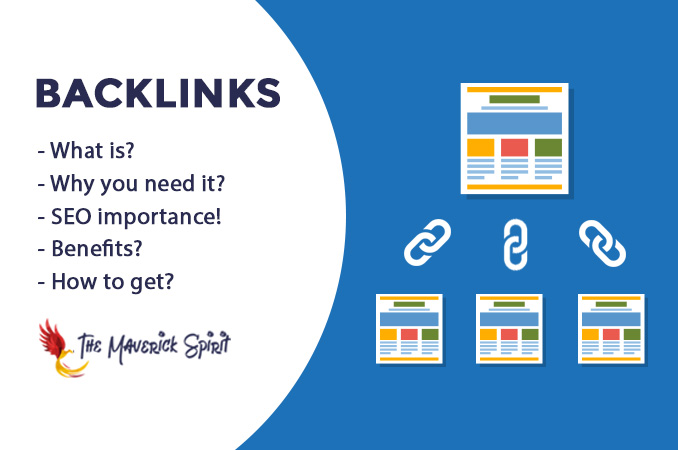Backlink Building: The Ultimate Guide to Boosting Your SEO

Backlink building is a foundational strategy in SEO (Search Engine Optimization) that involves getting other websites to link back to your site. Backlinks, also known as inbound or incoming links, serve as “votes of confidence” from one site to another, indicating to search engines that your content is valuable, credible, and worth sharing. When done correctly, backlink building can significantly boost your website’s visibility, authority, and ranking in search engine results. Here’s everything you need to know about backlink building, including strategies, benefits, and best practices to improve your SEO.
Why Are Backlinks Important?
Backlinks are essential because they signal to search engines like Google that other websites find your content valuable enough to link to it. In Google’s ranking algorithm, backlinks are one of the most important factors, as they act as endorsements that help search engines understand the quality and relevance of a page. High-quality backlinks from authoritative, relevant sites can boost your search engine ranking, drive traffic, and increase your site’s credibility.
However, not all backlinks are created equal. Search engines prioritize backlinks from high-authority sites over low-quality or spammy sites. Thus, the goal isn’t just to accumulate a large number of links but to secure high-quality, relevant backlinks that genuinely enhance your SEO profile.
Types of Backlinks
- Natural Links: These are organic links that come without any direct effort on your part. For example, if a blogger loves your content and links to it, that’s a natural link.
- Manually Built Links: These links are obtained through intentional outreach, such as asking influencers, bloggers, or other websites to link to your content.
- Self-Created Links: These are links that you create yourself, for example, through forum comments, blog comments, or guest posts. However, search engines may penalize self-created links if they seem manipulative or unnatural.
Effective Backlink Building Strategies
- Create High-Quality, Shareable Content The cornerstone of any backlink strategy is quality content. If you consistently produce valuable, well-researched, and engaging content, people are more likely to link to it. This could be in the form of in-depth blog posts, unique research findings, infographics, or even videos. Content that provides original insights or comprehensive guides tends to attract more backlinks, as other sites view it as a reliable resource worth referencing.
- Guest Blogging Guest blogging involves writing articles for other websites in your industry, often with a link back to your own site within the content or author bio. This not only helps you gain exposure to a new audience but also provides you with valuable backlinks from authoritative sites. When guest blogging, it’s crucial to target reputable sites with a strong domain authority and ensure the content adds value to their audience.
- Build Relationships with Industry Influencers and Bloggers Networking with influencers, bloggers, and other professionals in your industry can open up opportunities for natural backlinks. Building genuine relationships often leads to collaborative opportunities, content mentions, or features on other sites. Influencer partnerships, co-hosting webinars, or participating in industry roundups can generate backlinks while boosting your reputation in the industry.
- Use Broken Link Building Broken link building is an effective strategy that involves finding broken links on other websites and suggesting your content as a replacement. First, use a tool like Ahrefs or SEMrush to identify broken links on relevant websites. Then, reach out to the site owner, inform them of the broken link, and recommend your content as a suitable replacement. This approach is helpful because you’re providing value by helping them fix broken links while securing a backlink in return.
- Leverage Resource Pages Many websites have resource pages that list valuable links or resources for their audience. Identify resource pages related to your niche by searching Google for terms like “your topic + resources” or “your topic + useful links.” Then, reach out to the site owner, suggest your content as a valuable addition, and explain why it would benefit their readers.
- Create Link-Worthy Infographics and Visual Content Visual content, such as infographics, charts, and images, is highly shareable and can attract backlinks from websites that want to use it as a resource. By creating high-quality visual content and embedding a link to your site, you can encourage other sites to link back to your content when they share it. Share these visuals on your website and social media channels, or submit them to infographic directories to reach a broader audience.
Measuring Backlink Success: Key Metrics
- Domain Authority (DA) and Page Authority (PA): Tools like Moz provide DA and PA scores, which predict how well a site is likely to rank in search engines. High DA/PA links can provide greater SEO value.
- Referral Traffic: High-quality backlinks should drive traffic to your site. Track referral traffic using Google Analytics to see which backlinks are generating visits.
- Link Relevancy: A backlink from a site within your niche carries more SEO value than one from an unrelated site. Relevancy is key to maintaining the quality of your backlink profile.
- Anchor Text: The clickable text in a hyperlink (anchor text) is another important factor. Ensure that the anchor text in backlinks is relevant to your content and includes keywords, without appearing spammy or overly optimized.
Best Practices for Successful Backlink Building
- Focus on Quality Over Quantity: Quality is key in backlink building. A few high-quality backlinks from authoritative sites are far more valuable than a large number of low-quality links. Avoid spammy sites or link farms, as these can harm your SEO and lead to penalties.
- Diversify Your Link Profile: It’s essential to have a diverse backlink profile, meaning your links should come from various types of sites, including blogs, news sites, directories, and forums. Diversity makes your profile appear more natural and less manipulative.
- Avoid Black Hat Techniques: Practices like buying links, using automated programs, or participating in link schemes violate Google’s guidelines and can result in penalties. Focus on ethical strategies that offer value to both users and search engines.
- Regularly Audit Your Backlink Profile: Use tools like Google Search Console, Ahrefs, or SEMrush to monitor your backlinks. Regular audits allow you to identify and disavow any low-quality or spammy links that might negatively impact your site.
Final Thoughts
Backlink building is a powerful way to enhance your website’s SEO and increase your online visibility. By focusing on high-quality, relevant backlinks and using ethical strategies, you can build a strong backlink profile that drives traffic, improves your rankings, and establishes your site as an authority in your niche. Remember, backlink building is an ongoing effort that requires consistency and patience, but with the right approach, it can provide significant long-term benefits to your SEO strategy.



